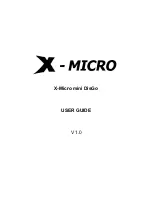
Chapter 5 Getting Information
Viewing the Library Configuration
Scalar i500 User’s Guide
149
•
Tape drives —
location coordinates, vendor name, model, type,
physical serial number (P-SN), logical serial number (L-SN),
firmware level, sled boot version, sled application version,
encryption method, and whether the tape drive is connected to an
I/O blade.
•
I/O blades
— if the library contains FC I/O blades, this table lists the
location coordinates, worldwide node name (WWN), firmware level,
and ready status.
The path to open the report from the web client is
Reports > System
Information
.
Viewing the Library Configuration
The
Library Configuration
report is a dynamic representation of the
physical locations of various library resources, including tape drives,
slots, partitions, and modules. Use the report to view information on the
following resources. Click on the item you want to view and the
information appears in a box to the right of the library diagram.
•
Tape drives
— (depending on the interface type, the information
provided may not include all of the following): interface type, tape
drive type, ready state, online status, assigned partition name,
location coordinates, element address, vendor, model, physical SN,
logical SN, world wide node name (WWNN), world wide port name
(WWPN), loop ID, topology request, speed request, actual topology,
actual speed, maximum speed, SCSI ID, SAS address, tape drive
firmware level, control path status, and encryption method of each
tape drive.
•
Slots
— type, assigned partition name (storage and import/export
[I/E] station slots only), location coordinates, barcode (storage and
I/E station slots only), media type, element address, encryption
method, get count, get retries, put count, put retries, and cleaning
status (cleaning slot only) of each slot. For more details about slot
data, see
Viewing Slot Information
on page 151.
















































